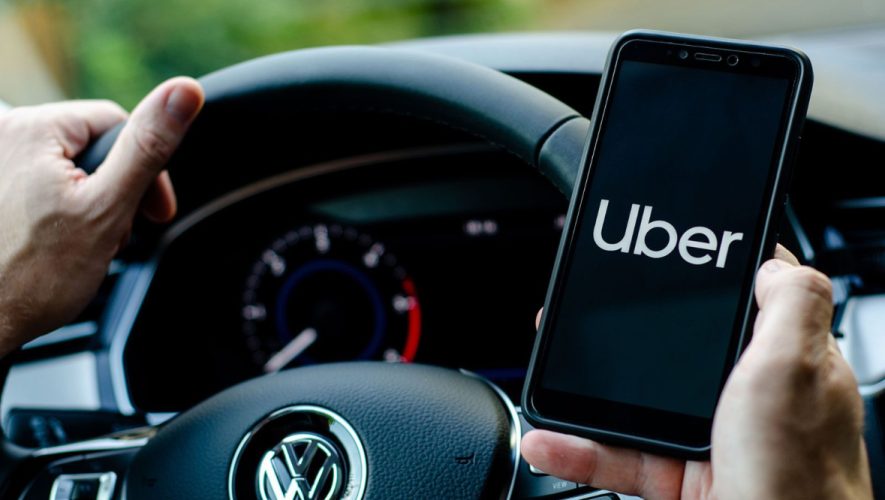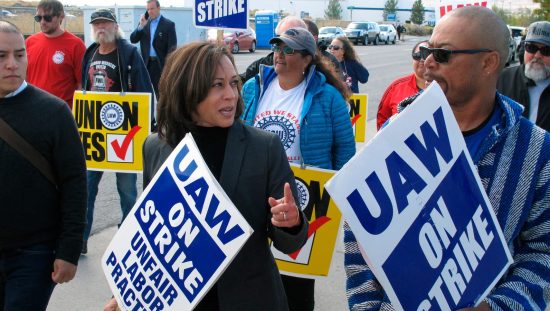Uber drivers don’t get unemployment insurance, but doesn’t mean no one pays.
When the pandemic hit, thousands of gig workers found themselves without rides, without support, and without answers. Platforms like Uber and Lyft insisted that drivers were independent contractors, not employees, and therefore not eligible for state unemployment benefits. In response, many states shuffled these workers into federally funded pandemic aid programs. The result? Billions in public dollars covered costs that companies refused to.
This isn’t just a pandemic problem. It’s a policy gap that’s been growing for years. By classifying workers as independent contractors, Uber and Lyft avoid contributing to unemployment insurance (UI) systems. But courts in places like New York and New Jersey have ruled otherwise, finding that these platforms exert enough control to qualify as employers under state law. Despite these decisions, enforcement is patchy, benefits are inconsistent, and workers are often left with little more than a denied claim and a vague explanation.
The legal ambiguity around worker classification enables gig companies to offload social costs onto the public, and it’s time for a structural response. Using case studies from three states, let’s examine how companies undermine unemployment insurance, why enforcement fails, and what a reimagined, federalized benefits system might look like. If platforms want to keep flexibility, they need to share responsibility. Right now, they’re getting both, and everyone else is footing the bill.
Misclassification and What It Means
That fine line matters. If workers are found to be employees, companies must pay unemployment insurance taxes, and workers qualify for UI benefits. But gig platforms have long maintained that drivers are independent contractors. This designation means the platforms avoid payroll taxes, including contributions to UI, Social Security, and Medicare. It also removes obligations to provide benefits like overtime pay or workers’ compensation.
Courts, not companies, make classification decisions. The Department of Labor (DOL) is clear: even if a company calls someone an independent contractor and the worker agrees, that agreement does not hold legal weight. Only courts or government agencies can determine whether a worker is legally an employee.
Despite this, platforms continue to argue that drivers control their schedules and locations and, therefore, are not employees. However, drivers experience limitations similar to those found in traditional employment. App companies set fares, deactivate workers, and impose rating systems. Uber believes that you are self-employed when it suits them.
New York: Legal Wins, Uneven Impact
In December 2020, New York’s Appellate Division ruled in Lowry v. Uber Technologies Inc. that Uber drivers were employees for UI purposes. This ruling should have expanded access to benefits.
In practice, most drivers still struggled to get approved. Many were funneled into Pandemic Unemployment Assistance (PUA), a temporary federal program that paid less and offered fewer protections than traditional UI.
Enforcement proved limited. Uber did not voluntarily change its classification practices after the ruling. State guidance and any requirement to pay back taxes remained unclear. Workers remained in the dark. The legal victory showed potential, but the system failed to follow through for three years after this ruling.
In November 2023, the state reached a new milestone. New York and Uber announced a first-of-its-kind settlement requiring Uber to make retroactive and future payments into the state’s Unemployment Insurance Trust Fund. The agreement covers contributions dating back to 2013 and mandates quarterly payments moving forward. Although the total dollar amount was not disclosed, the DOL emphasized through this settlement that the state believes app-based drivers are eligible for UI and entitled to financial protections. It marks the first time Uber has agreed to contribute to UI in this way, even as it continues to maintain that its drivers are independent contractors.
New Jersey: An Audit Without Consequences
In 2019, the New Jersey DOL audited Uber and concluded it owed $650 million in unpaid UI taxes and penalties. The company pushed back. After years of legal battles, New Jersey settled with Uber in 2022 for $100 million, less than one-sixth of the original figure.
According to the NJDOL, Uber initially refused to provide complete payroll records during the audit. For three years, the company challenged the findings. Once in court, Uber produced select records to argue for a lower assessment, undermining the original audit. The company has not started paying into New Jersey’s UI system, and the settlement did not require Uber to reclassify its drivers as employees. While the payment covered misclassification between 2014 and 2018, it did not change Uber’s classification practices or require future contributions.
The audit showed that states can identify large-scale misclassification and calculate its financial impact. But the final settlement demonstrates how even aggressive action can fall short. Powerful companies can delay legal processes until political pressure fades. A large initial figure becomes a smaller final payment.
California: Legal Changes and Loopholes
California has also been a battleground for gig worker classification. Assembly Bill 5, passed in 2019, applied the ABC test to determine employment status. The law presumed workers were employees unless companies could prove they were free from control and had their own independent trade.
Uber and Lyft responded by bankrolling Proposition 22, a 2020 ballot initiative that exempted app-based drivers from AB5. The companies spent over $200 million campaigning for the measure. Voters passed it, and drivers remained contractors without benefits.
In 2021, a California judge ruled Prop 22 unconstitutional. Then, the Court of Appeal overturned that decision in 2023. A year later, the California Supreme Court agreed to hear the case and upheld its constitutionality, continuing to fail to hold the companies accountable. Legal uncertainty continues.
Meanwhile, Uber and Lyft have not paid traditional UI taxes in California. A 2021 report from the UC Berkeley Labor Center estimated that the companies avoided $413 million in UI contributions under the Prop 22 framework. Years later, this number continues to grow, as Uber continues to exempt itself from paying.
Public Cost and Private Gain
When companies do not pay into UI systems, the cost does not disappear. It shifts. During the pandemic, many app-based workers received PUA benefits funded entirely by the federal government. Others received nothing.
State UI trust funds are built on employer contributions. If major employers do not participate, these funds become weaker. In the long term, states may need to borrow from the federal government or reduce benefits. This reduces coverage for all workers, not just those in gig jobs.
What Should Change
Some cities are experimenting with portable benefits programs that allow workers to build up rights regardless of employment status. App-based companies like Uber, Lyft, and DoorDash have promoted their own “fake” versions, describing small stipends or savings accounts as “portable benefits.” These programs do not provide access to unemployment insurance, workers’ compensation, health insurance, or paid leave. For example, in 2024, DoorDash launched a pilot in Pennsylvania and expanded to Georgia, where it contributed just 4 percent of pre-tip earnings. Many of these initiatives are funded by workers or customers, not companies.
The term “portable benefits” once meant something broader. A 2016 Aspen Institute report proposed a model where companies pay into benefit accounts based on hours worked or income earned, regardless of employment classification. These benefits would be universal, pro-rated, and not tied to a specific job. In theory, that approach could offer more consistent protections for independent workers while preserving flexibility. The problem is that current pilots fall short, and platforms have spun the idea into a strategy to avoid worker classification entirely and evade paying their fair share in taxes.
Federal solutions are still missing. In 2024, the DOL issued a new rule that tightened the definition of independent contractors, aiming to better reflect the nature of gig work and close loopholes used to justify misclassification. But in May 2025, DOL enforcement of this rule was paused amid legal challenges. Still, courts have upheld the rule in private lawsuits. Without agency enforcement, however, its real-world impact remains limited.
With enforcement that depends on state agencies proving unreliable, a hybrid model offering UI from both the federal government and companies could offer a solution. Companies would still pay into state systems, but federal UI could serve as a fallback. That way, all eligible workers receive support, regardless of classification. This avoids rewarding companies for noncompliance while making the safety net more accessible. Without federal UI reform, classification and compliance will remain fragmented. States can audit and sue, but those efforts depend on resources and political will.
A Redefined System
Uber and Lyft built their model on flexibility. But that flexibility comes with a cost. When drivers lose work, they have few options. When companies refuse to pay into UI systems, public programs fill the gap. And when courts rule in workers’ favor but enforcement falls short, nothing changes.
The system isn’t broken. It’s working as designed. Gig companies were built to operate outside traditional employment structures, and the UI system wasn’t designed to cover the growing number of workers excluded by those definitions. That mismatch leaves courts, states, and workers scrambling to plug gaps that companies exploit by design.
If states want to ensure UI covers all workers, classification rules need to change. If platforms want to keep their current structure, they should contribute to the public systems that support their labor force.
The bill always comes due. The question is who pays it.


